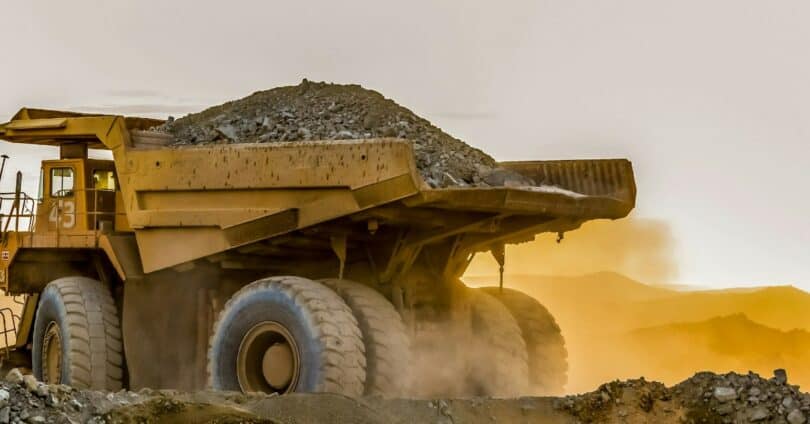From raw material measurements upon initial quarrying to monitoring asset utilization across processing, right up to dispatch loading validation checks, strategically leveraging industrial-grade mining instruments at pivotal operational touchpoints unlocks substantial process enhancements for mining enterprises. By tracking key production metrics more holistically compared to estimating volumes based on visual or bucket quantification, mining scales uplift insight precision, accountability, and equipment effectiveness to boost profitability margins through well-informed proactivity. But which weighing scale for mining is the most efficient?
Why are Mining Scales So Important?
Robust mining scales are invaluable for streamlining operations and safeguarding compliance across mining firms handling high material volumes daily. Key needs addressed include:
Accurate Measurement of Extracted Materials:
Quantify ore, precious minerals, or aggregate output accurately post-extraction using overloaded truck scales during initial unprocessed stockpiling or conveyor belt scales on processed materials for calibrating yields reliably to projected estimates.
Efficient Loading and Transportation:
Optimize truck load capacities by hitting target weight tolerances precisely for each haul using reliable truck scales, eliminating underloading inefficiencies or overloaded non-compliance risks exceeding legal limits. This maximizes tonnage moved per trip/asset.
Inventory Control and Management:
Detailed tracking using rail scales on mine sites with extensive goods movement needs to be facilitated by freight rail deliver high-confidence tallies on all inventory flows from inbound supplier deliveries to moved outbound feedstock for reconciliation and planning insights.
Process Optimization:
Identifying bottlenecks by installing load cell-based belt scales along conveyor segments offers key data on succession volumes and rates for pinpointing underperforming steps needing tweaks to uplift the overall processing pace and annual total yields possible within existing infrastructure constraints.
Types of Mining Scales:
The diverse range of tasks and materials encountered in mining necessitates tailored weighing instruments, each with unique features and capabilities aligned to intended functions. Here is an overview of the most common mining scale classifications:
- Truck Scales: Heavy-duty weighbridges with Foundation Isolation Frameworks minimize misweighing errors from sloped ground using self-balancing and settling prevention even when handling 400-ton haul trucks in harsh conditions. Multiple platforms facilitate smooth traffic flows.
- Wheel Loader Scales: Fitted onto front equipment buckets, these compact yet high-accuracy tools audit net payload weights post-excavation/quarry segmenting operations by vector measurements immune to machine tilt angles experienced during travel for validating estimated densities.
- Conveyor Belt Scales: Strategic inline belt scale monitoring provides reliable volumetric flow rates in time increments and totals for reconciling projected system rates against actual observed figures. Helps optimize feeds, transfers, and throughput capacities.
- Beneficiation Scales: For rich mineral ores and high-value dusty payloads requiring weighing continuity between extraction, crushing/processing, and sorting plus pneumatic transport stages, specialized beneficiation scales withstand abrasion, delivering precise aliquot weights into separation machinery for better yields.
- Excavator Scales: Where front shovels handle initial notionally split mine feeds across fleet trucks or stacked payloads, fitted scales help operators avoid overloading through virtually displayed shovel weights for each scoop/swivel captured using hydraulic pressure sensors connected to cab digitizers showing target thresholds.
Applications of Mining Scales:
In practice, strategically installed mining scales facilitate immense operational enhancements across these key functions:
- Production Measurement: By tallying feedstock volumes flowing through various process stages more precisely, managers align realistic processing expectations while tracking yields reliability for projections guidance using observed real-world equipment performance baselines from advanced flow scale data.
- Equipment Effectiveness Monitoring: Insightful comparisons between loads handled per shift measured against rated shovel capacities inform where additional units or upgrades make financial sense for debottlenecking total volumes possible longer-term within mine lifetimes based on buried reserves estimates and expansion strategies.
- Inventory Management: With extensive material movements between mine locations, beneficiation warehouses, loading zones, and client dispatches at ports daily, lean operations depend on accurate tracking of current tonnage availability against in-motion quantities and forecasted demands using rail and truck scale quantifications to balance flows.
- Compliance with Regulations: Stringent safety, environmental, and accuracy mandates govern mining legalities spanning waste containment, groundwater impacts, and contractual fulfillments. Reliable data records from truck scale systems assist transparency on compliance adherence demanded by licensing bodies and clients.
- Safety and Security: Load cell analytics applied for lockout-tagout procedures verifies no residual energy remains stored in excavator boom arms or conveyor belt tension carriages before allowing safe maintenance access. Meanwhile, controlled access scale software prevents unauthorized system usage or settings tampering through permissions.
Choosing the Right Mining Scale:
Not all scales suit every unique site scenario. When selecting optimized weighing systems for sustaining profitability, consider key factors like:
Capacity and Accuracy Requirements:
Will miniature laboratory scales suffice, or are bulk train car solutions over 500 tons capacity needed? Required precision levels determine appropriate load cell sensitivities, calibration needs, etc. Get target technical attributes aligned to onsite ore, vehicle, and volume fluidity realities.
Environmental Conditions:
Rigorously gauge surrounding elements – from weatherproofing needs determined by annual rainfall patterns and corrosion resistance against caustic washdown detergents to explosion-proof safety compliance where combustible mineral dusts may persist constantly in the air around equipment. Scales prove mission-critical lifeline infrastructure dependencies once integrated operationally.
Portability vs Permanence:
Depending on mine plans longevity, portable wheel loader scale suites allowing flexible operator-to-equipment reassignment as zones open/close offer short-term value, whereas engineered foundations for fixed conveyor belt scales suit centralized processing hubs with decades of intended equipment use ahead.
Existing Systems Integration:
Modern data-driven mining firms demand seamless flow monitoring, ERP software, and centralized data lake synthesis opportunities using scales’ high-resolution outputs for unlocking augmented intelligence potentials using ML and AI once scaled. API programming and IoT readiness enable this.
Ownership Costs Considerations:
Lastly, determine the preferred procurement model – whether Capex equipment purchases, Opex leasing rentals, or scaled usage charges based on monthly weighing transactions offer better cash flow alignment and TCO cost reduction against income over a lifetime.
The Impact of Mining Scales on Efficiency and Profitability
Embracing appropriately specified heavy-duty mining scales standardized across materials handling processes – from initial extraction weighing through stockpiling, asset/fleet loading, then processing conveyance stages – directly enables measurable enterprise enhancements:
Reduced Operating Costs:
Eliminating inaccurate underloading losses coupled with undetected overloading inefficiencies discovered through consistent weighing oversight results in more optimal usage, manifesting cost savings from an average of 8-12% on tonnage moved based on analyses. Associated labor and maintenance budget reductions accumulate over time against reliable instrumentation for capacity planning needs analyses and failure prevention. Fleet fuel savings from proper loading additionally compound financial advantages recognized annually.
Increased Throughput Productivity:
Consistent accuracy assurances along the downstream value chain – from quarry to stockyard to processing center to dispatch terminals – help managers pinpoint bottlenecks more readily by creating culpability with better productivity metrics assessments. This facilitates faster debottlenecking decisions, benefitting overall mine asset utilization, depreciation optimizations, and faster time-to-revenue conversion from underlying reserves.
Improved Safety and Transparency:
Load compliance visibility assists greatly in preserving critical safety tolerances designed to protect human life, equipment integrity, and environmental impacts through proactively mitigated risks like overturned trucks, damaged roads, or silo overload spillages traced preventatively back to mismeasured shovel segments.
Regulatory Compliances:
Documented records acquired from mining scales deter breach penalties and workaround necessity costs levied over licensing requirement violations on accuracy, waste emissions, hazardous materials handling, and containment policies mandated federally while improving public transparency and demonstrating ecological commitments. This builds community trust and operational longevity.
Data-Enriched Decisions:
By collecting terabytes of load variability data daily from each integrated scale into cloud data lakes, powerful Simulation Software leveraging AI may then conduct predictive forecast modeling, completing repetitive iterations for administrators to assess “what if” planning scenarios – from altering diesel fleet motor combinations given expected processed material densities to modeling conveyor belt life longevity against reinforced compound replacements daily.
Conclusion
Mining firms focusing on the strategic importance of implementing customized industrial weighing scales adjacent to crucial material handling functions reap vast efficiency upsides and confident direction-setting capacity through gained transparency harnessed responsibly. Advanced load tracking unlocks safety assurances, while improved reconciliation processes guide projection reliability and direct cost reductions amid volatile commodities marketplaces. Treat scale platforms as indispensable operational catalysts given centrality in value realization processes evident for producers throughout the mineral resource development chain.









